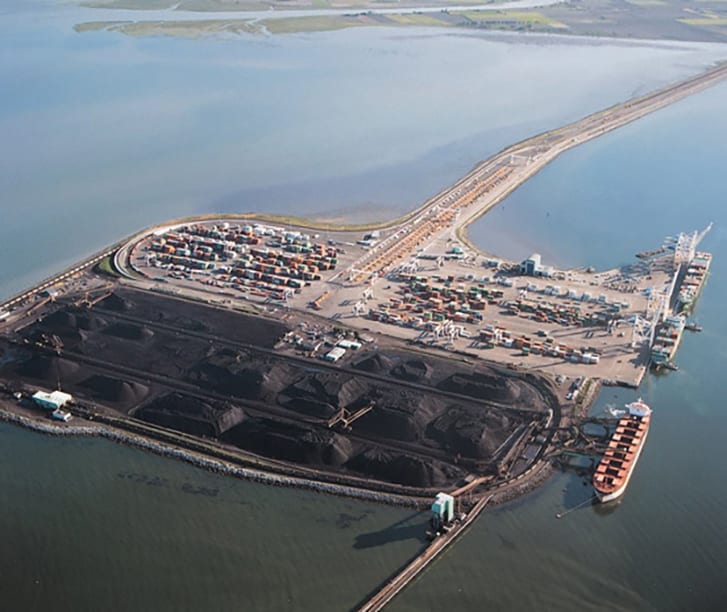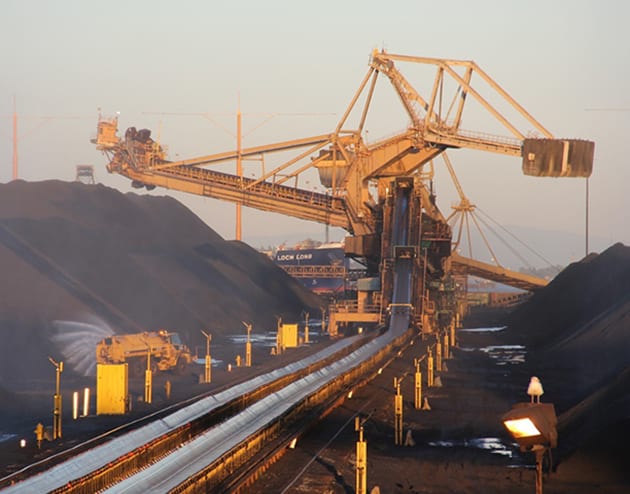Goals
- Increase material handling efficiency
- Upgrade existing legacy system
- Improve access to data to mitigate risk
- Create a state-of-the-art data playback system
Challenges
- Existing legacy system had reached end of life
- Previous system required custom programming for database creation, yet even then, the database lacked the level of detail required and flexibility
- Transitioning the facility with zero downtime
Results
- Coal ships regularly go to 24 countries and the solution helps bring more than $2 billion of wealth to Canada each year
- The solution helps in handling of coal that accounts for about 30% of all tonnage through the Port of Vancouver
- Solution helps with maintaining throughput capacity of up to 29 million tons annually
- Increased access to data, greater collaboration that brings improved productivity

“When it came down to it, what we wanted to ensure is we had a solution with the right technology that would last another 15 years. We selected AVEVA.” - John Newton, Process Engineer
Background
Delta, British Columbia, Canada – Situated in the heart of an ecologically rich area, Westshore Terminals Limited Partnership (Westshore), works hard at operating a clean and efficient operation. The nearby tidal waters of Roberts Bank are the feeding grounds for salmon fry, cod, crabs, and a host of birds from blue herons and cormorants to the magnificent bald eagle.
As North America’s leading export coal facility, Westshore ships mostly metallurgical coal that is used in making steel. All of the coal that Westshore handles arrives by train from south-eastern British Columbia , southwestern Alberta as well as Montana and Utah in the USA. Trains travel on two rail loops on the site and are unloaded within enclosed dumper sheds at the terminal to help minimize the impact on the environment.
Coal is hauled up to 1,200 kilometers to tidewater at Westshore Terminals on Canada’s West Coast – one of the longest export coal journeys in the world. On average, six unit coal trains, up to 125 cars long, arrive each day. It takes from 4 to 6 hours to unload a train depending on use of the single or twin rotary dumpers. Dedicated coal train sets are on an approximate 100-hour rotation from mine to port to mine.
The coal storage areas are serviced by four major pieces of equipment known as stacker-reclaimers, which move up and down the site to add or remove coal from the stockpile. From there, coal is transferred through a series of high-capacity, high-speed conveyors to one of Westshore’s two deep-sea berths.
Located in Delta, just outside Vancouver, Canada, Westshore has been an essential link in the coal chain between mines, rail and end user for 40 years. Shipments regularly go to about 24 countries and bring more than $2 billion of wealth to Canada each year. The coal handled by Westshore accounts for about 30% of all tonnage through the Port of Vancouver.
The first ship to sail from Westshore was the Snow White, which left for Japan on May 4, 1970 with 24,289 tons of metallurgial coal. In the early years, Westsore had a throughput capacity of 5.5 million tons annually. It took 43 employees to run the terminal. Today, Westshore has 250 employees, runs 24 hours a day, seven days a week and has an annual throughput of up to 29 million tons.
Staying Ahead of the Curve
For 40 years, Westshore has focused on providing the highest quality bulk material handling with the lowest cost factor associated with operation. During that time, technology has moved forward in leaps and bounds. With its existing system no longer supported, Westshore needed to ensure its continuity of business.
QCA Systems Ltd, a local systems integrator, helped Westshore examine its operational, technical, and business needs for industrial software in order to assist Westshore in selecting a new software platform.
In 2009, Westshore upgraded its entire operation to AVEVA System Platform with Historian Client, InTouch and Historian. AVEVA System Platform provides a single and scalable platform for all the SCADA, Supervisory HMI, Manufacturing Execution System (MES) and Enterprise Manufacturing Intelligence (EMI) needs of the operations and maintenance personnel.
At the center of the AVEVA System Platform is the ‘plant model’, which is the logical representation of the physical processes being controlled and supervised. The object technology makes configuration, logging, delivery and maintenance of real-time and historical information point-and-click simple.
The System Platform plant model was architected by QCA Systems specifically for Westshore Terminals based on their experience with System Platform and the knowledge of Westhsore’s operations. QCA also assisted with the implementation of the new software solution into the site infrastructure.
Selecting System Platform provided Westshore with a number of advantages. Their previous system required custom programming to create their database, yet even then, the database lacked the level of detail and flexibility provided by AVEVA.
In the old system, all data had to be stored manually and the storage systems had to be maintained by an IT staff. AVEVA’s highly evolved database Historian made manual data storage a thing of the past. All data storage requirements are handled automatically and transparently within the system.
Within System Platform is a high-performance process historian with production history archiving, efficient data compression and auto-configuration of historical archiving that eliminates duplicate effort and an industrial web information server that dramatically simplifies the organization and delivery of operations information for use across all functions in the organization.
According to John Newton, Process Engineer, “We have leveraged Historian to access more information which gives us the ability to increase our productivity.” All data collected by Historian Client flows back to Historian and can be accessed to analyze performance and productivity through the “playback” feature created by QCA Systems.
Playback of previous jobs was a key requirement for selection of the new system. AVEVA uses leading technology leveraging object oriented configuration/programming along with advanced .NET controls for real-time systems.
With AVEVA’s superior graphics and a legendary, easy-to-use configuration environment, integration with the business systems was easily facilitated. To maximize these features, Westshore plans to expand this integration further to close the loop from business to process.
Off the Shelf Solution
One of the main advantages of using AVEVA is that it is a commercial, off the shelf solution featuring reliability, ease-of-use and low maintenance. Plus, the transition to the new AVEVA system was effortless.
“We never went off-line,” Newton said. “With just 15 minutes of downtime we ran both the old system and the AVEVA system in parallel. The switch was seamless.”
AVEVA provided Westshore with easier to access field data. This in turn provides for increased collaboration among staff in the various areas of the operation. Access to this data gives foremen the ability to see information rapidly and to quickly address quality, maintenance and productivity issues. Future expansion plans include replacing the field HMIs to further leverage the product to increase productivity, reduce downtime and mitigate risk.
Data Mining
Newton said, “I’m really impressed by the rapid access to Historian data. Playback allows you to rerun a job and see the routing happening, and perform a complete root cause analysis during any slice of time in the past. Without playback, you’d have to have experts in data mining doing root cause analysis or troubleshooting… now we have operations or maintenance personnel doing root cause analysis easily from their desktops.”
Playback was designed and integrated by QCA Systems with the support of AVEVA’s technical team. The level of integration and ability to play back history through the SCADA nodes was a big feature for Westshore.
“Right now, we have better access than we had before. It is easier to look at data that we collect and as we leverage this system it is going to continue to improve,” said Newton.
Poised for Greater Achievements
In addition to all the operational features, the flexibility of the security options was a key deciding factor for Westshore. According to Newton, “Active directory… to be able to tie into it and use sub-sets for people in our organization to do different things… that was a make or break feature. We cannot afford downtime. AVEVA helps keep us up and running at peak efficiency.”
Together with over 250 employees, Westshore Terminals is proud of their 40 years of operation, and the vast economic benefits to the municipality, province, and to Canada. Now, with their new system in place, Westshore can leverage AVEVA’s advanced real-time operations management software to continue as the leading export coal facility in North America.
